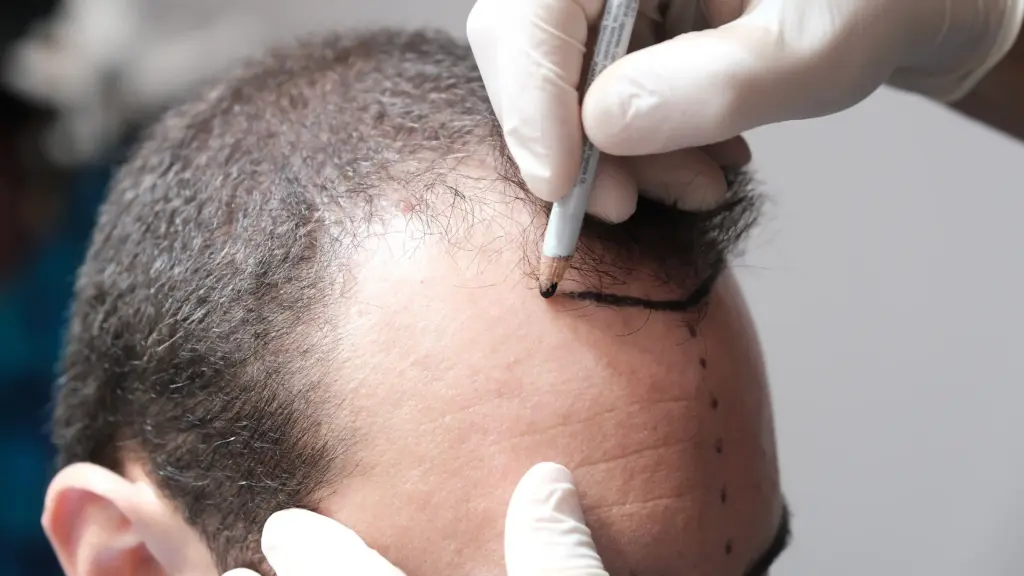Hair transplant surgery restores hair density using advanced FUE and DHI techniques. Learn about the procedure, diagnosis of hair loss, and recovery process.
Hair transplantation is a microsurgical procedure that involves moving hair follicles from a part of the body known as the “donor site,” typically the back and sides of the scalp where hair is genetically resistant to balding to a “recipient site” that is balding or thinning. It is currently the only permanent solution for hair loss caused by androgenetic alopecia (pattern baldness). While traditionally associated with treating male pattern baldness, the field has expanded significantly to include hair restoration for women, as well as eyebrow, beard, and mustache transplants.


Hair transplantation is not limited to the scalp. The principles of FUE are applied to various areas:
Scar Revision: Hiding scars from accidents or previous surgeries (like facelifts) by planting hair into the scar tissue.

While a hair transplant is a treatment, it is a response to a specific medical condition: alopecia (hair loss). Understanding the symptoms and underlying causes of hair loss is essential for determining if a patient is a suitable candidate for surgery. Not all hair loss is treatable with a transplant; therefore, recognizing the type of hair loss is the first step in the patient’s journey.
Hair loss manifests differently depending on the underlying cause and the patient’s gender. It is rarely a sudden event but rather a progressive process.
Send us all your questions or requests, and our expert team will assist you.

Identifying the cause is critical because hair transplantation is primarily effective for genetic hair loss, whereas other causes may require medical therapy first.
A successful hair transplant begins with accurate planning. This requires a formal diagnosis to rule out non-permanent causes of hair loss and a “staging” process to calculate the exact number of grafts needed for coverage. At Liv Hospital, this evaluation is scientific and mathematical, ensuring that the donor area is not over-harvested and the recipient area receives adequate density.

Before any surgery is scheduled, the physician must confirm that the hair loss is stable and the donor area is healthy.
Blood Work: To rule out underlying metabolic issues. Tests often include Ferritin (iron storage), Thyroid Stimulating Hormone (TSH), Vitamin D levels, and hormonal panels for women (androgens, testosterone).
Staging is the roadmap for the surgery. It allows the surgeon to communicate the extent of baldness and estimate the number of grafts required.


One of the most critical parts of the diagnosis is assessing the Donor Capacity.

Hair transplant surgery is a meticulous, multi-step process that combines medical precision with artistic design. It is typically an outpatient procedure performed under local anesthesia, lasting anywhere from 6 to 8 hours, depending on the number of grafts. The goal is to achieve a result that looks completely natural and lasts a lifetime.

Cancer is a complex disease, but with accurate diagnosis, personalised treatment and a supportive environment, every patient has a path toward healing. Liv Hospital is committed to walking beside you from the first examination to long term follow up. Our expert teams, advanced technologies and international care standards ensure that you receive safe, effective and compassionate treatment at every stage of the process. You can contact us today to start your evaluation, book a free certified online doctor consultation or send your medical reports for review.
The first medical phase involves removing the hair from the donor zone.
Note: In DHI, this step is combined with Step 3. For standard FUE, the surgeon creates tiny incisions in the recipient area where the grafts will be placed.
The success of a transplant relies heavily on the first 10 days of recovery.
Hair transplantation is often marketed as a cosmetic commodity, but it is, fundamentally, a surgical procedure that carries medical risks and requires strict sterility. Liv Hospital distinguishes itself by performing hair restoration within a JCI-accredited, full-service hospital environment, ensuring safety standards that small clinics cannot match. We combine this medical rigor with high-end aesthetic artistry.
The market is flooded with low-cost options, but the “Liv Standard” prioritizes quality, safety, and longevity over mass production.
We utilize the latest globally recognized technologies to maximize graft survival rates (the percentage of transplanted hairs that grow).
We view hair transplantation as one part of a broader hair health strategy.
At Liv Hospital, we restore more than just hair; we regain self-confidence. Our commitment is to deliver results that are undetectable, natural, and permanent.
Hair transplantation operates on the scientific principle of “Donor Dominance.” Hair follicles from the back of the head (the donor area) are genetically resistant to DHT, the hormone that causes balding. When these healthy follicles are moved to a balding area (the recipient site), they retain this genetic resistance and continue to grow for a lifetime, just as they would have in their original location.
Both techniques involve extracting grafts individually (FUE), but the implantation method differs:
Hair transplantation is performed under local anesthesia, so the patient feels no pain during the surgery. At Liv Hospital, we use Needle-Free (Jet) Injection technology to numb the scalp without the initial prick of a needle. For patients with high anxiety, mild sedation is also available to ensure the experience is comfortable.
Standard FUE uses steel blades to open channels in the scalp. Sapphire FUE uses blades made from sapphire gemstones. These blades are sharper and V-shaped, allowing the surgeon to create smaller, smoother microchannels. This results in:
Patience is key. New growth typically begins around month 3 or 4. You will see significant visual improvement by month 6, but the full, mature result with complete density and texture takes 12 to 18 months to develop.

Brain tumors are a big worry in kids' cancer care. They now lead to more
Understanding suicide risk assessment is key in healthcare. The five steps of screening are vital
Recent studies have found a strong link between ADHD and sleep apnea. These two conditions
When a child chokes, every second is critical. Airway obstruction is a serious condition. It